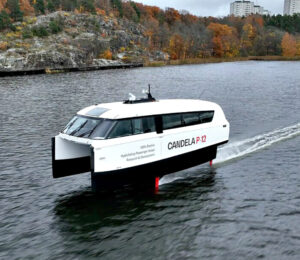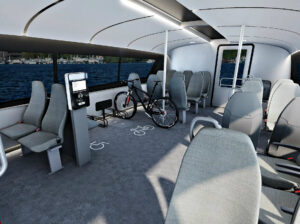With its lake extremely popular in the warmer months and its ski resorts overflowing in the winter, the Lake Tahoe region attracts 15 million visitors year-round.

And to the frustration of many who live and visit Tahoe, the traffic congestion is a growing problem. Local jurisdictions strive to reduce the issue, but thus far nothing is truly working.
One solution that could help ease the traffic flow is FlyTahoe, a hydrofoil electric ferry designed to reduce travel time from one side of the lake to a projected 30-minute cross-lake service. FlyTahoe reportedly will cut the travel time in half compared to the daily 20,000 car trips along the same route.”
A fleet of ferries may launch by the end of next year or early 2026. Reportedly, the company is making arrangements with various marina areas around the lake.
“This ferry holds 30 people, holds bikes, skis, snowboards, and is wheelchair accessible,” said Ryan Meinzer, CEO of FlyTahoe. “That’s one of our missions here. We want to make it a safe and comfortable ride that’s accessible to all, locals and tourists alike. So you can imagine, if we’re making six round trips a day, that’s about 300 people a day.”

U.S.-based FlyTahoe has collaborated with Swedish technology company Candela to introduce the new electric ferry in Lake Tahoe. The partners bill the vessel as “the fastest electric vessel in the world with the longest range and significantly lower operational costs than diesel-powered vessels.”
The electric ferry uses computer-guided underwater wings – known as hydrofoil technology – to smoothly travel above the water’s surface at high speeds, unaffected by waves and winds. Because the wings lift the hull above the water, the technology reduces drag and cuts energy consumption by an estimated 80 percent compared to conventional vessels.
Passengers prone to seasickness shouldn’t need to worry because sensors and software balance the craft. Lake Tahoe never freezes in winter, so the ferry will be an alternative for visitors to the lake’s 14 surrounding ski resorts.